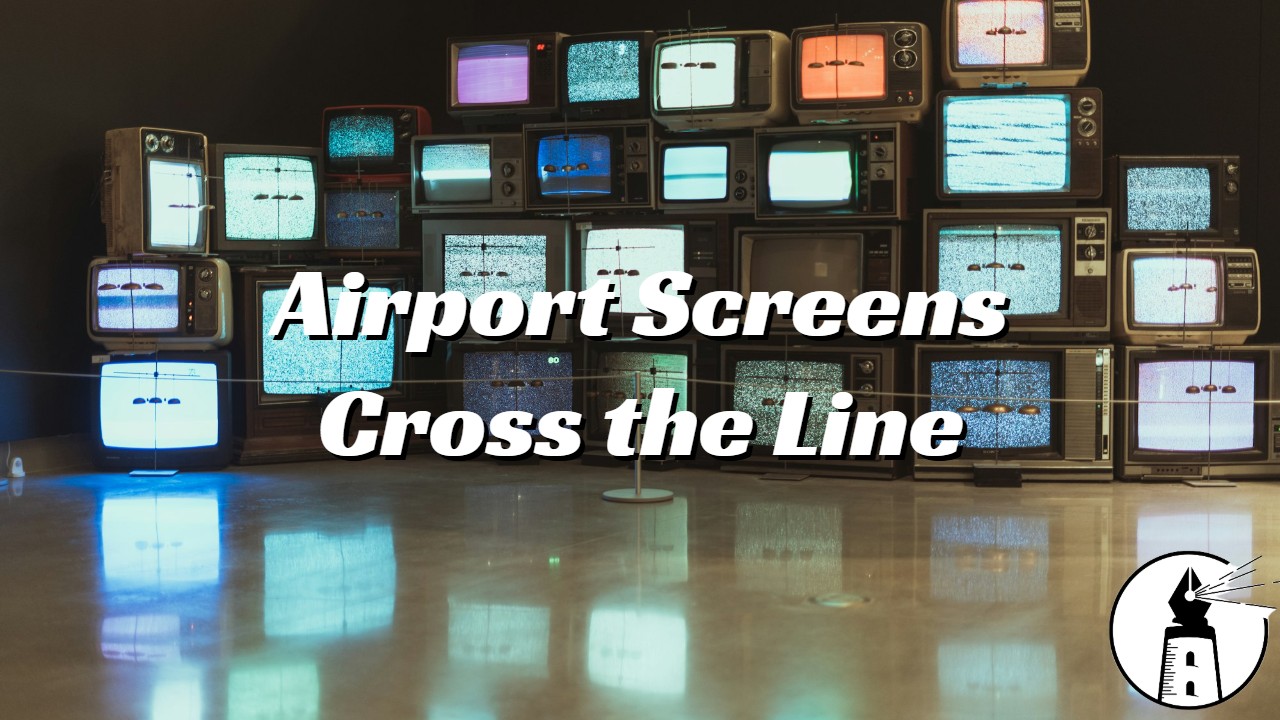Airports across the United States have declined to broadcast a video distributed by the Department of Homeland Security in which Homeland Security Secretary Kristi Noem blames Democrats in Congress for the ongoing federal government shutdown. The video was intended to play at TSA security checkpoints nationwide, where travelers wait in mandatory screening lines with little ability to look away. In the recording, Noem claims that Democrats refuse to fund the government and that TSA employees are working without pay as a result. She assures passengers that delays will be minimized and expresses hope that Democrats will “recognize the importance of opening the government.”
What makes this situation notable is not simply the content of the video but the venue in which it was meant to appear. Government-produced messages at airports are typically informational in nature, covering travel documents or prohibited items. They rarely assign political blame. Seattle-Tacoma International Airport was one of the first to decline to air the video, stating that it would not display material of a political nature. The Port of Seattle said it preferred to focus on supporting unpaid workers and encouraging bipartisan cooperation rather than repeating partisan arguments. Portland International Airport refused soon after. Officials there cited possible conflicts with the Hatch Act, a federal law passed in 1939 that prohibits government employees from using public resources for electoral or partisan purposes. Oregon state law contains similar protections that prevent public officials from promoting or opposing political parties during work hours. Airport authorities in Los Angeles, Phoenix, Cleveland, Charlotte, Buffalo, and Westchester County in New York followed with similar decisions. Some referenced internal policies that ban political content on publicly controlled display systems. Westchester County officials said the message was unnecessarily alarmist and inconsistent with what they expect from national leadership.
The rejection by so many airports marks a significant moment in the history of public communication. For generations, federal agencies have maintained a clear boundary between information and persuasion. Even during periods of intense political conflict, such as the Cold War, public announcements drafted for mass audiences were framed as national guidance rather than ideological instruction. The underlying principle was that government communication should speak on behalf of the nation as a whole, not a faction within it. Noem’s video breaks with that tradition. It was not designed to educate or inform. It was designed to persuade.
There is also a psychological dimension that cannot be ignored. Behavioral research has long established that messages delivered in confined environments have increased influence because the audience cannot disengage. Airport security lines are one of the most effective captive-audience settings in modern life. Travelers must stand still, often under stress, with no control over what is shown in front of them. That is why airlines use the same environment for repeated safety briefings. It is also why authoritarian governments have historically leveraged transportation hubs for ideological messaging. Whether intentional or not, a partisan directive spoken from an overhead screen in such a setting does not feel like communication. It feels like instruction.
That is where the situation shifts from questionable judgment to something darker. The image of citizens inching through metal detectors while an official voice assigns political blame has a distinctly Orwellian character. It is not theatrical exaggeration to say so. When the state uses compulsory spaces to broadcast partisan narratives, it stops behaving like a neutral administrator and begins assuming the posture of an authority that expects emotional alignment. The difference between a public notice and propaganda is not always in the wording. Sometimes it is in the power dynamics between the speaker and the listener.
The legal and ethical implications extend beyond this single incident. If the Department of Homeland Security insists on pressing the issue, watchdog groups could plausibly request an investigation into whether the Hatch Act has been violated. More concerning is the possibility that airports may begin to feel pressured into compliance for fear of losing federal funding from agencies such as the Federal Aviation Administration. In that scenario, refusal would no longer be a matter of principles. It would become a matter of risk management.
Some might argue that the message in question is mild compared to other forms of political persuasion. That argument misses the point. If airports become acceptable venues for government blame campaigns, other public spaces will follow. Post offices could be next. Then DMV counters, Social Security waiting rooms, or IRS hold lines. Citizens would slowly become an audience rather than a constituency.
The airports that said no have done more than reject a video. They have issued a reminder that neutrality in public communication is not a procedural preference. It is a civic safeguard. A government that wishes to maintain trust must speak in facts even when discussing disruption. It must not speak in narratives designed to reward itself or punish others. The difference may seem small in the moment, but history has shown that entire political systems have shifted based on whether that difference was respected.
—By Greg Collier



